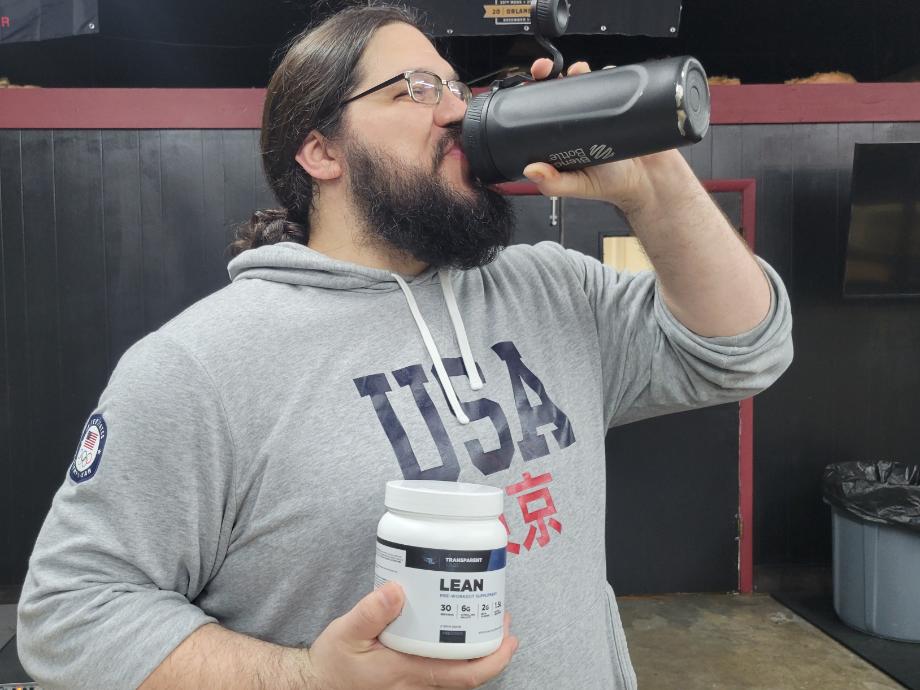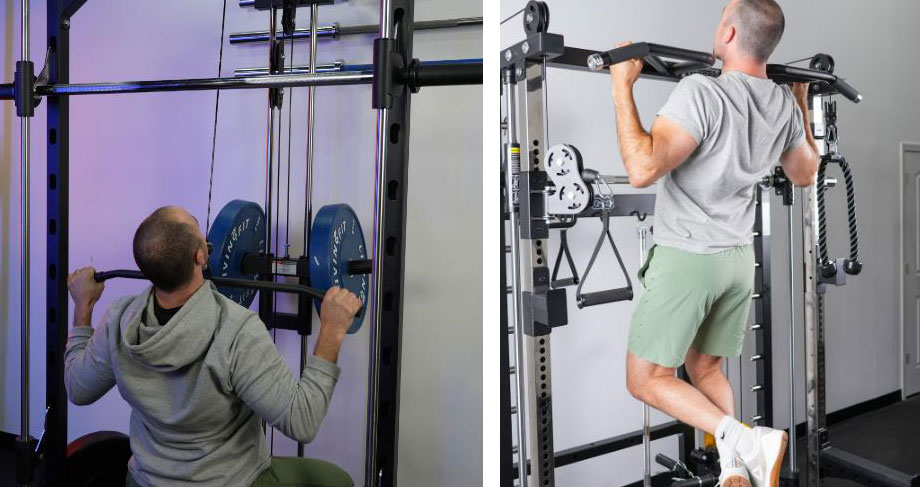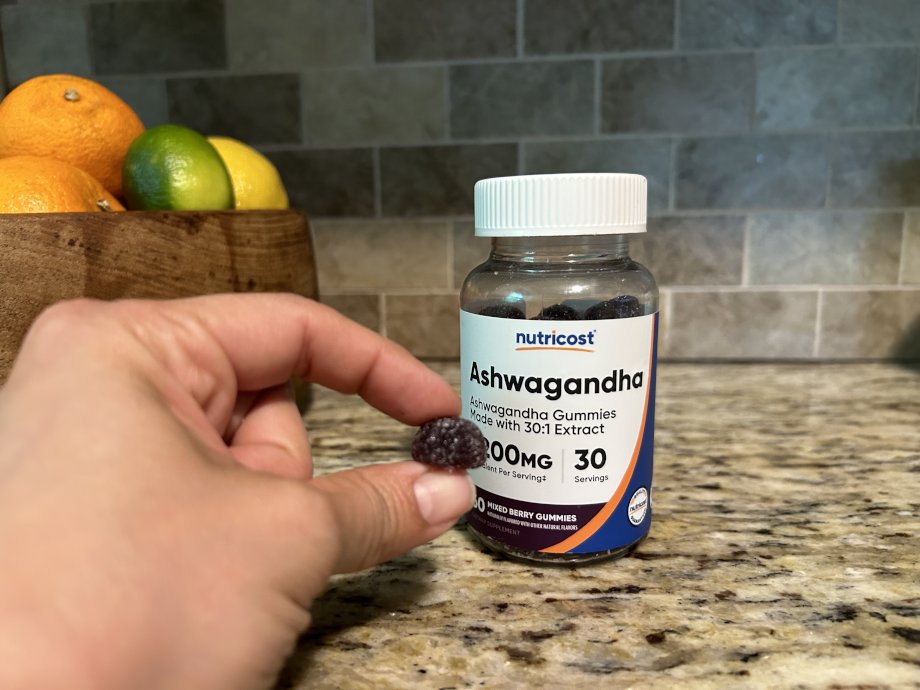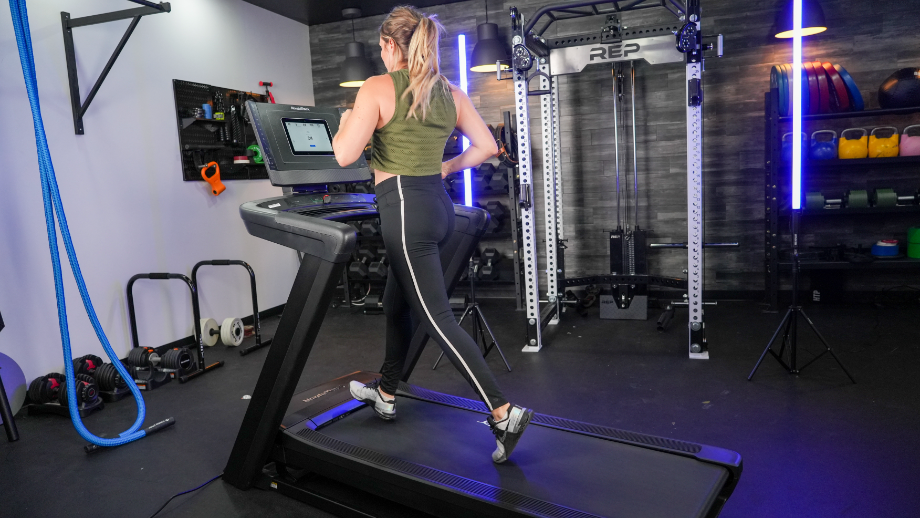I love that feeling of excitement you get when you find both the time and motivation to train and want to jump right into an intense workout. However, whether you are about to go for a run or finally find the time to experiment with some HIIT at home, stopping for an obligatory dynamic stretch or warm-up before your training session can sometimes dampen your excitement.
Despite admitting my impatience with warming up, after years of fitness training, I have learned first-hand that warming up before diving in is a must!
Pre-workout dynamic warm-up exercises can improve the effects a workout has on our muscles and tendons, increase our flexibility and range of motion while training, and in some cases (such as running), contribute to our overall endurance and performance.
Here, I want to walk you through some of the best warm-up exercises to prepare your whole body for a more vigorous workout routine, where you finish your training feeling fresh rather than stressed.
Related: Static Stretching for After Your Workout
Medical disclaimer: This article is intended for educational and informational purposes only. It is not a substitute for health or medical advice. For medical advice, contact an appropriate healthcare provider.
The Best Exercises For a Full-Body Warmup
Here are 10 excellent warm-up routine exercises to more reliably transition your body into the intensity of your workout.
Arm Circles
Why Do It: Arm circles help to warm up the upper body while delivering a quality stretch for your chest, back, and shoulders. Furthermore, arm circles can help increase your shoulders’ range of motion and act as a low-intensity cardio warmup before your workout.
How to Do It:
- Stand shoulder-width apart, or jog in place, and throw your right and left arm up and back in a circular motion. Imagine trying to resemble a windmill on your body’s right and left sides.
- Reset to a jogging or standing position, and circle forward.
- Circle for 30 seconds, or do 10 to 20 circles.
During arm circles, your shoulders and upper body move your arms (not your elbows), so keep your arms loose while remaining balanced. You will feel the most pressure on your shoulders during this exercise. However, if the pressure becomes too painful, you can reduce the size of your circles to ease the stress of the movement.
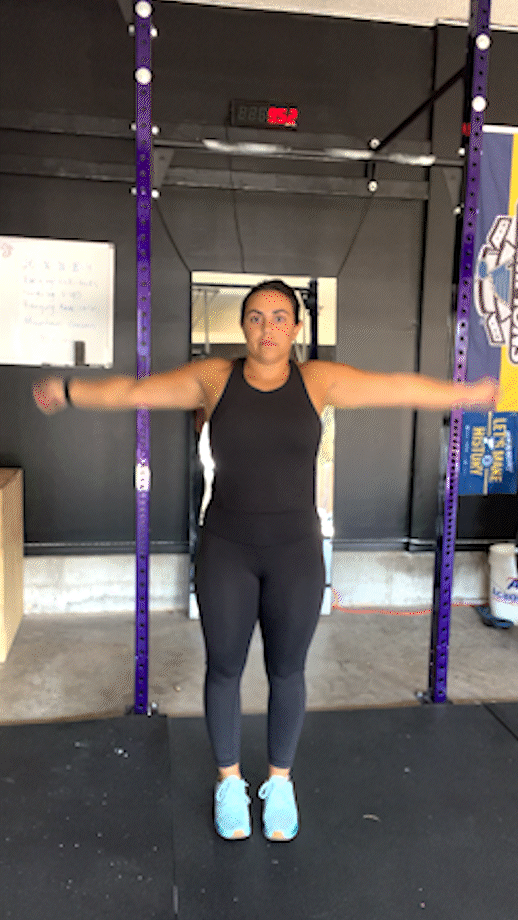
Arm Swings
Why Do It: Arm swings deliver a similar effect as arm circles. Arm swings also help set and stretch your chest, upper back, and shoulders in motion. In addition, the movement also acts as a low-intensity warm-up exercise that can help elevate your heart rate and help your body better transition into the intensity of your workout.
How to Do It:
- Stand or jog in place with your arms fully outstretched.
- Cross your left arm and right arm in front of you until you feel a strong stretch, then quickly return to the outstretched starting position.
- Do three 30-second sets or 10 to 20 swings.
During arm swings, you should gently pulse back and forth where your elbows meet maximum tension for a few seconds to experience a more intense stretch during the swing. It also helps to alternate your arms’ over and under positions using your left hand and right hand as guides.
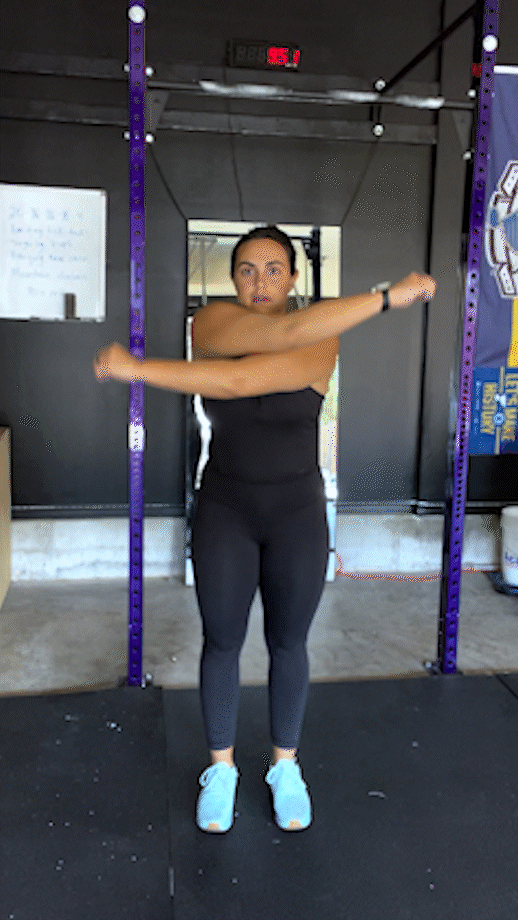
Inchworm
Why Do It: The inchworm is an excellent dynamic stretch and warm-up exercise that targets your core and engages your shoulders, arms, and upper and lower back. In addition, the inchworm can also help increase flexibility in your quads and hamstrings.
Furthermore, the inchworm helps increase your heart rate while preparing your body for a more intense workout. Beyond warming up, the inchworm offers an accessible, low-impact cardio and strength exercise.
How to Do It:
- Begin by standing with your feet shoulder-width apart, and hinge from your hips.
- Then, walk your hands out as far as possible while keeping your feet planted.
- After holding in an extended upwards plank position for 2 to 5 seconds, slowly use your hands to walk back to your original standing position, then repeat.
Aim to resemble an upwards plank when using your hands to walk outwards. However, in this exercise, your hands are extended past your shoulders (or at your maximum reach). When walking back, you can return to your original full standing position or touch your toes. If you choose to touch your toes, you can use this moment to get a good quad and hamstring stretch during the exercise.
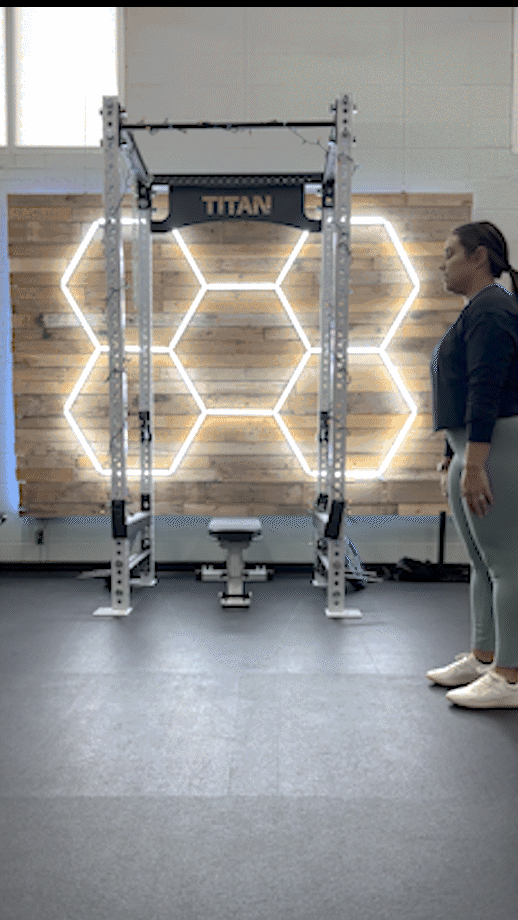
Pull-Aparts
Why Do It: Banded pull-aparts are an excellent warm-up for pressing movements such as push-ups, dips, or bench presses. Banded pull-aparts specifically help to activate your shoulders and upper back.
How to Do It:
- Hold a resistance band in front of your chest with your palms facing downwards and arms shoulder-width apart.
- While engaging your shoulder blades and upper back, pull the resistance band apart until it meets your chest and your arms are fully outstretched, then return the band to its original shoulder-width tension.
- After 10 reps, rotate your hands so that your palms face upwards, then pull apart again. Aim for three sets of 10 with both your palms upwards and downwards.
When holding the band, you can adjust your grip wider for less tension or closer together for more tension. In addition, if you do not have a resistance band or the tension of using one is too much, you can still experience a stretch and burn from engaging in this technique without a band.
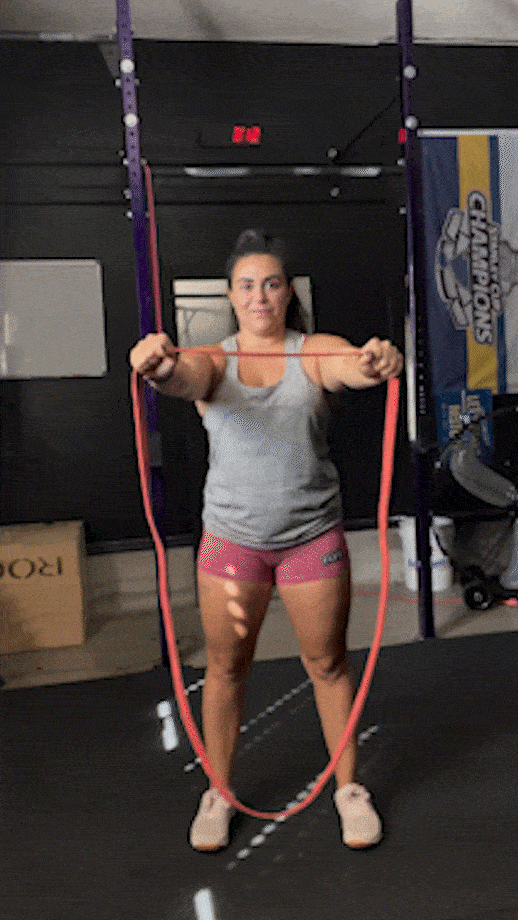
Jumping Jacks
Why Do It: Jumping jacks help activate the lower body muscles, such as the hamstrings, quads, hips, calves, and glutes. Furthermore, jumping jacks are a great warm-up exercise that can elevate your heart rate, get your blood flowing, and offer a low-intensity cardio workout that is easier on your joints.
How to Do It:
- Begin by standing with your arms at your sides and feet hip-width apart.
- Raise your arms from your sides above your head in an arch-like motion while simultaneously kicking your feet outward.
- After engaging in the jack, quickly return to your original position while remaining on the balls of your feet, then immediately repeat. Go for 10 to 30 reps three times.
When engaged in the arch-like motion of the jack, you should resemble a wishbone. It’s important to remain light on the balls of your feet to prevent stressing your knees and retain a fluid movement and balance. Beyond warming up, jumping jacks can offer a more intense workout by increasing the speed and reps or incorporating ankle weights or weighted vests.
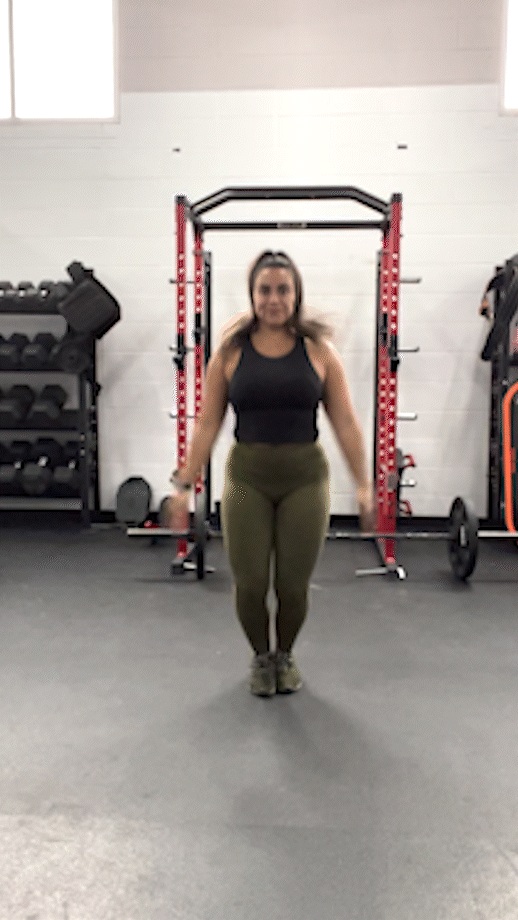
Push-ups
Why Do It: Push-ups help build muscle in your shoulders and chest. However, they also stimulate muscle growth in your core and lower body. While best known for being a strength exercise, push-ups can also help to elevate your heart rate and burn calories.
Most notably for warming up, push-ups are a great way to activate and prepare your shoulders, chest, and arms for more intense strength training or heavy lifting such as barbell-based workouts. There are various push-up types (diamond, clap, shoulder, etc.), but I will walk you through a traditional push-up here.
How to Do It:
- Get into a high plank position, with your palms planted shoulder-width apart on the ground and your feet together or less than a foot apart.
- From the high plank, lower yourself to the ground while maintaining a tight core. When lowering yourself, keep your back straight. Aim to lower yourself to where your chest is a “fist’s” distance from the ground, never dropping to the ground entirely.
- When you reach your end range of motion, push yourself back up to your original high plank position, then repeat. Aim for three sets of 10 to 30, depending on your fitness level.
If you can not engage in a push-up while in a high plank, you can reduce the intensity by doing the push-up on your knees.
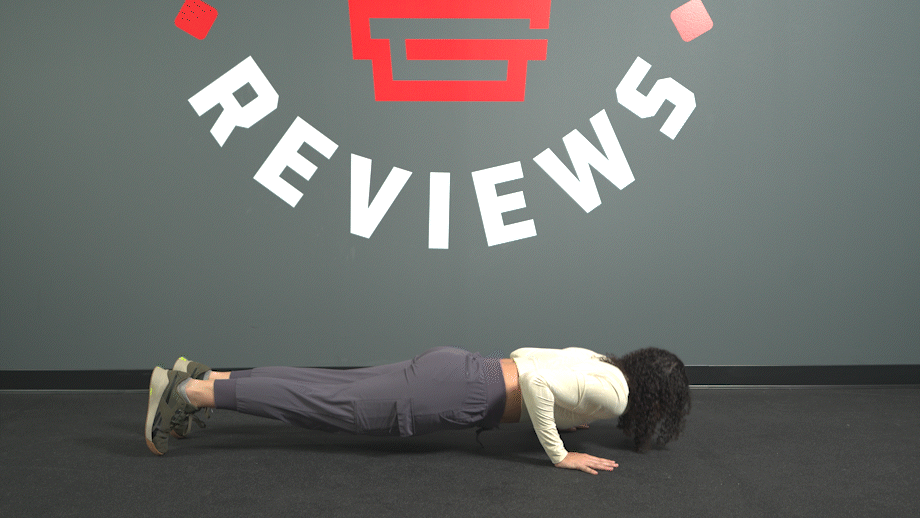
Leg Swings
Why Do It: Leg swings help warm up our quads, groin, glutes, adductors, inner and outer thighs, and hamstrings. There are three types of leg swings: back, front, and side to side; however, here I’ll explain a front leg swing.
How to Do It:
- Start by standing on your left foot, with your right foot slightly elevated and your leg extended somewhat in front of you. You can use the help of a nearby wall (tree, fence, etc.) to help you with balance.
- Kick the elevated foot to a height where you feel a good stretch and healthy pressure. I try to aim for my adjacent hand.
- From there, bring your leg and foot back down to their original slightly elevated position, then repeat and switch sides once completing your set.
- Swing 10 to 15 times or for 30 seconds on your right and left leg.
Leg swings can also be done backward and laterally (side to side), following the same logic as a front leg swing. However, bend your knee more than you would during a front swing when doing a backward leg swing, and expect to find more stretch with less kick. Also, when doing lateral leg swings, your stationary foot should be planted behind the leg you are swinging.
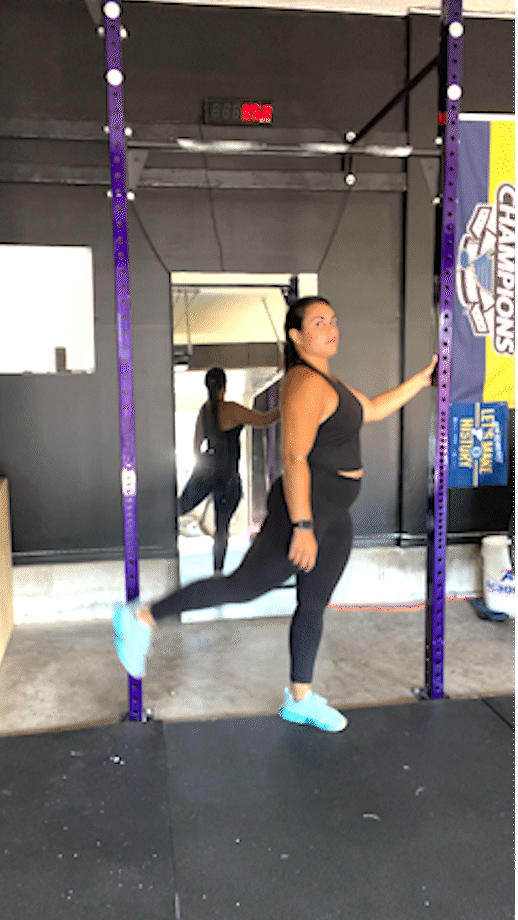
Lunges
Why Do It: Lunges help to activate almost every muscle group in the lower body while still engaging your core. This low-impact body weight exercise primarily engages the glutes, quads, hamstrings, hips, and calves. Furthermore, lunges help to stimulate lower-body flexibility and help one practice better balance while training.
How to Do It:
- Put your front foot way out in front of the other as your rear foot comes backward.
- While keeping your back straight, drop your weight straight down. Drop until your rear knee is slightly elevated, facing the ground, and your front leg’s thigh is parallel to the floor.
- Push back up using your leg’s strength to your original stance. Go for at least three sets of 10 to 30 reps on each side.
You can rest your hands on your hips to help maintain proper posture and balance. Lunge sets can be done on one leg at a time or alternating. I suggest alternating lunges to increase the cardio element of the exercise. However, it’s best to ensure you understand the technique and how to maintain a healthy balance and posture during the exercise before engaging in alternating lunges.
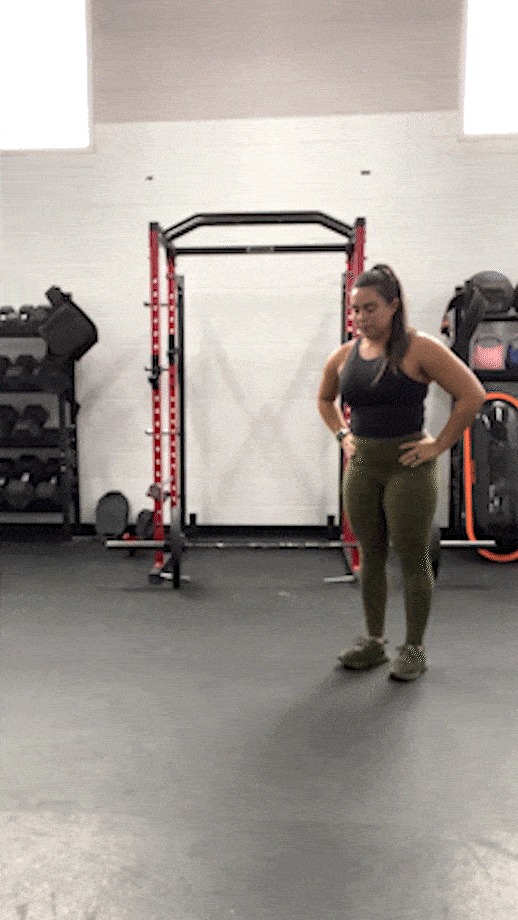
Lateral Lunges
Why Do It: Lateral lunges are a great way to build strength in almost every muscle group in your lower body while also promoting flexibility in the hips. The exercise also helps you practice maintaining balance and stability when training.
How to Do It:
- Begin by taking a wide stance, approximately double shoulder-width apart (sometimes called a “sumo stance”, with your toes pointing forward and hands held in front of your chest.
- Lower your body while shifting your weight to one leg as you bend the knee on the working leg. Keep your opposite leg extended but with both feet remaining planted on the ground.
- Return to your original position briefly, then repeat with the opposite side. Go for three sets of 10 to 30 reps on each leg.
While being a low-impact exercise, people with chronic knee pain should be extra careful when practicing this exercise. Both feet should always remain in their original place.
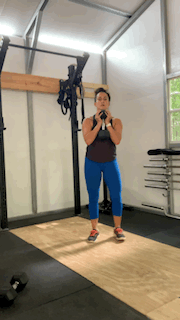
Squats
Why Do It: Squats help to activate the glutes, quads, hamstrings, and calves while still engaging your core. Squats are an excellent warm-up for deadlifts and strength exercises; however, they still offer some cardio benefits if done at the right pace. While there are many different squat types, I’ll explain a traditional squat that can benefit both beginner and advanced fitness levels.
How to Do It:
- Begin with your feet planted shoulder-width apart, toes facing forward, and chest facing high.
- Lower yourself down as if you’re about to sit in a chair. Stop at a height that resembles sitting in a desk chair with your chest raised and hands held in front of you.
- From your lowered position, push through your heels to return to your original standing position, then repeat. Go for three sets of 10 to 30 reps.
Try to keep your back as straight as possible as you lower yourself into the squat.
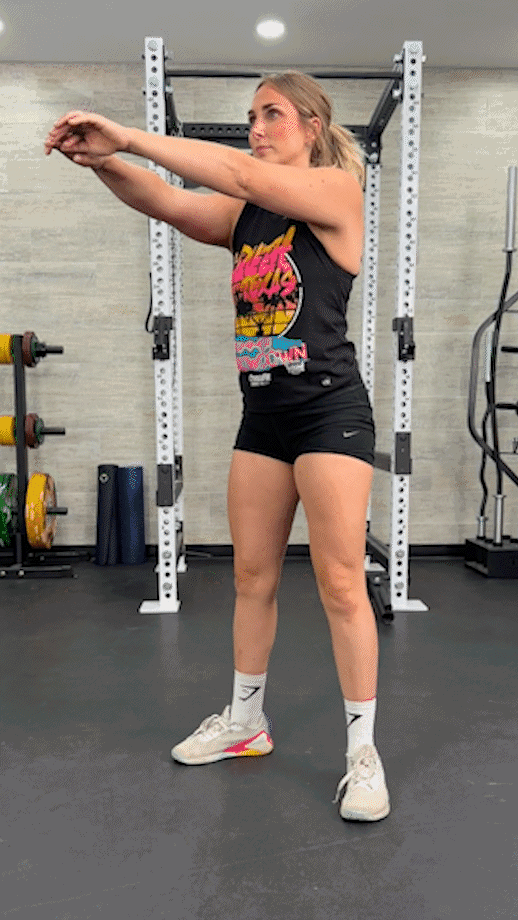
Why Warmups Matter
Warming up before exercise helps elevate our body’s temperature while loosening our muscles and joints to more easily receive oxygen and prepare to better engage in their full range of motion. Furthermore, warming up helps to get our nervous system activated, as well as increase blood flow and elevate the heart rate, so our body can more reliably and safely transition into more intense exercise.
A 2010 meta-analysis1 of 32 studies on the subject determined that warming up improved athletic performance in 79% of tests determining its effects. While the benefits of warming up are still debated by science and the fitness world, the analysis also firmly states that there was little evidence to suggest that warming up was ever detrimental to the athletic performance of any of those participating in the studies reviewed.
Furthermore, warming up has a similar logic to why we want to cool down. For example, by slowly transitioning from a sprint to a walk as we finish our workout, we more delicately transition our body to a regular or resting heart rate that enables an active recovery phase.
FAQs About the Best Warm-up Exercises
What are 5 exercises for warm-up?
Five great warm-up exercises are:
Arm circles and swings
Leg swings
Alternating lunges
Inchworms
High knees
What is the best warm-up before a workout?
The best warm-up before you work out is a routine that engages your entire body while simultaneously elevating your heart rate and blood flow to help your body reliably transition into more intense exercise.
Dynamic stretches with low-intensity exercises are the best combination for preparing your body for an intense workout.
What are ideal warm-up activities?
Ideal warm-up activities include exercises that safely elevate your heart rate while activating your muscles and joints to experience better mobility and flexibility.
Generally speaking, exercises and dynamic stretches that help inform and prepare your body for a sudden change in oxygen and muscle use define an ideal warmup.
Some examples would be:
Jumping jacks
Jumping rope
Butt kicks
High knees
Push-ups
References
- Fradkin AJ, Zazryn TR, Smoliga JM. Effects of warming-up on physical performance: a systematic review with meta-analysis. J Strength Cond Res. 2010 Jan;24(1):140-8. doi: 10.1519/JSC.0b013e3181c643a0. PMID: 19996770.




